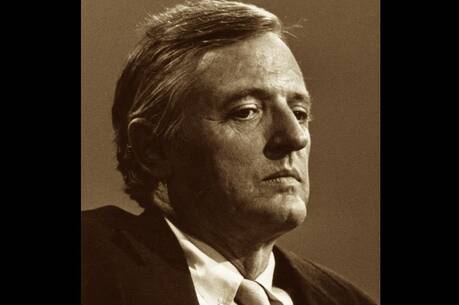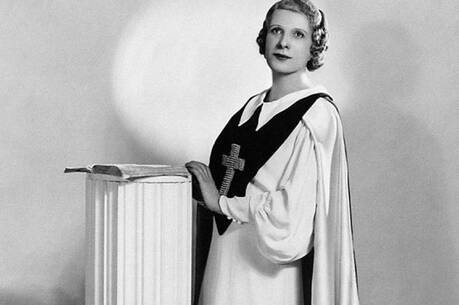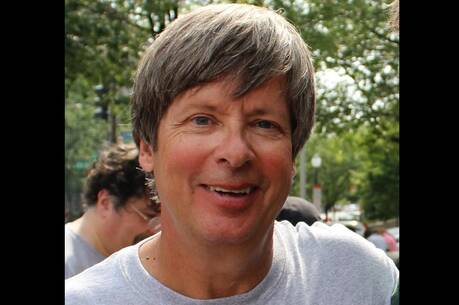Review: Bridging the Catholic gap
Over half of self-identifying Catholics do not attend Mass on Sunday on a regular basis. For some, this reality is shocking, maybe even horrifying. For others, this data only verifies a growing assumption. Whether this situation is a revelation or a confirmation, learning who these individuals are and what actually led them here is likely to surprise.
In attempting to understand what keeps many people from coming to Mass more often, the church frequently operates on a misdiagnosis. There is often a disconnect between how voices in the church describe “secularity” or religious disaffiliation and what the most recent research reveals. What we find is that the situation is more complex than we give it credit for, and this is, in part, why our misdiagnosis has led to a mistreatment.
The growing corpus of literature on evangelization and catechesis is frequently isolated to the philosophical and theological realm, typically responding to ideological currents. Appealing to these disciplines is not the issue; the problem lies in not grounding these claims or putting them in conversation with actual data. While, in one sense, this disconnect makes it hard to develop practical, pastoral responses to these individuals, it ultimately reveals a more fundamental issue: We don’t know or understand who they actually are.
Cultural Catholics seeks to fill this gap. Author Maureen K. Day works to answer the question of who “cultural Catholics” really are—and how to connect with them. As a sociologist and professor of religion, Day offers a refreshing and insightful exploration in her contribution to this pressing issue. Her treatment of the data is rigorous but accessible, and her presentation of pathways forward is thoughtful and discerning.
Day describes a “cultural Catholic” as one who identifies as Catholic while reporting that they attend Mass less than once per month. While varying definitions exist, she explains that cultural Catholics are ultimately understood as individuals “more loosely tethered to Catholicism.”
Presenting her book as a starting point, Day exhorts readers to “go beyond pure understanding” and use it as a resource that leads readers to engage cultural Catholics within their orbit. She reasserts that she does not intend to give the illusion of having all the answers but instead promotes an approach of genuine accompaniment. Day further fosters this spirit and demonstrates its potential by embodying it herself throughout the work.
Along with demonstrating academic rigor and careful thought in her presentation, Day exhibits genuine compassion and respect for the subjects of her research. In defining the population that makes up cultural Catholics based on the data, she clarifies that the term cultural is neither an evaluative judgment nor a stand-in for “less” Catholic.
Rather than taking a reactionary stance toward the Catholics she is writing about, Day assumes the position of both a serious scholar and a fellow Catholic. She takes them seriously and explicitly rejects the notion that these individuals are in any way inferior. She sincerely attempts to understand what fostered the distance between these individuals and the church, exploring what sources of tethering remain and how they might be nurtured and encouraged.
The structure of Cultural Catholics is one of its greatest strengths, making the book a resource that is as meditative as it is practical and applicable. While each chapter focuses on a specific topic arising from the data, it begins with a brief vignette that Day draws from interviews she conducted. These stories ultimately serve to give voice to the complex situations of cultural Catholics, priming the reader to identify these individuals within the data they are about to receive.
The man who married a woman of another faith and struggles with her inability to participate in Communion; the college student whose home parish is often silent on critical social issues; the husband and wife who felt increasingly ostracized by their faith community after their son came out as gay: These are but a few of the stories that capture the experience of cultural Catholics.
Day in no way diminishes the importance of attending Mass. She reiterates that Mass embeds people into parishes, enables them to build relationships, helps them develop a Catholic worldview and is ultimately important in the formation of a Catholic identity. What does it mean then, that some cultural Catholics maintain a Catholic identity less rooted in parish life and the church? Taking both the importance of the Eucharist and the faith of cultural Catholics seriously, Day identifies potential pathways forward.
For Day, there is a need to rethink and refocus not only on how we are reaching out to these individuals but also on what we actually hope to accomplish in doing so. She contends that if our goal is simply to increase Mass attendance, we will ultimately fail. Enlivening the faith of cultural Catholics and rekindling a sense of belonging in the church is the deeper work we must take on.
Recovering an understanding of this deeper work will help us simplify the ways we go about accomplishing it. Day explains that we often operate on an “add fuel” mindset, believing that more energy and excitement will reinvigorate engagement in our parish communities. Rather than looking at possible additions, she suggests that we identify existing barriers and consider how to “reduce friction” instead. For example, if a parish invites parents to a fellowship event, offering free babysitting with confirmation teens in need of service hours will likely make the opportunity more possible for irregular attendees.
Being practical and creative in this way will enable parishes to foster a more welcoming environment and build more likely pathways for engagement with cultural Catholics. Day hopes that in identifying ways of responding to the broad needs and struggles of these individuals, from mental health to financial challenges, deeper emotional ties will be made, encouraging more engaged participation in the life of the church.
Recognizing that no one parish can single-handedly respond to each of these needs, Day suggests that dioceses must discern how best to pool and coordinate efforts to better respond to the cultural Catholics in their care. She suggests recognizing the collective strengths and weaknesses can enable parishes to “specialize” while still fostering a more collaborative, communal approach.
As a scholar who researches evangelization and seeks to identify how the church can better reach those beyond our pews, I struggle to find thinkers who propose pathways forward that are both practically sound and spiritually rich. Cultural Catholics embodies both of these needs and is a resource from which any diocese, campus ministry or scholar engaged in this work would benefit. Day is neither blindly optimistic nor despairing; rather, she charts a way ahead fitting for this Jubilee Year, undergirded by authentic, ambitious hope.











